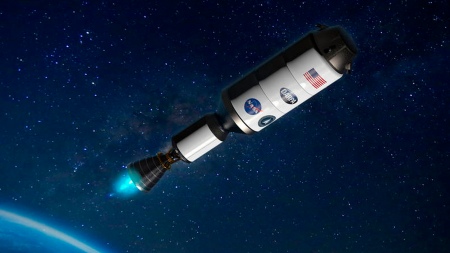The POT and an investigative agency Pentagon will develop a nuclear-powered rocket engine to send astronauts to Mars, both organizations reported Monday.
The administrator of the United States space agency, Bill Nelson, announced that NASA will collaborate with the Defense Advanced Research Projects Agency (Darpa, for its acronym in English) – the research and development branch of the Pentagon -, to ” develop and test advanced nuclear thermal propulsion technology from 2027“.
With the help of this new technology, “Astronauts could travel to and from deep space faster than ever beforean important capability to prepare for manned missions to Mars,” NASA said in a statement reproduced by the AFP agency.
Nuclear thermal rockets can be three or more times more efficient than conventional chemical propulsion and they would reduce travel time, something essential for an eventual mission to Mars, according to NASA.
In a nuclear heat engine, a fission reactor is used to generate extremely high temperatures, while heat from the reactor is transferred to liquid propellant which is then converted to gas, which expands through a nozzle and provides thrust.
“Darpa and NASA have a long history of fruitful collaboration.“, said the director of Darpa, Stefanie Tompkins, who recalled the Saturn V rocket that carried the first astronauts to the Moon.
And he added that the nuclear thermal rocket program “will be essential to more efficiently and quickly transport material to the Moon and, eventually, people to Mars.”
NASA conducted its last tests of nuclear thermal rocket engines more than 50 years ago, but abandoned the program due to budget cuts and Cold War tensions.


















